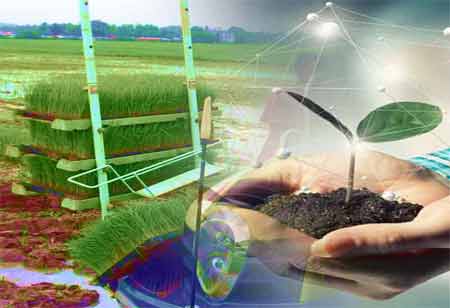Thank you for Subscribing to Agri Business Review Weekly Brief
Evaluating the Economic Viability of Biostimulants in Agriculture
The utilisation of biostimulants in agriculture is gaining traction due to their ability to enhance crop performance and sustainability

By
Agri Business Review | Thursday, February 29, 2024
Stay ahead of the industry with exclusive feature stories on the top companies, expert insights and the latest news delivered straight to your inbox. Subscribe today.
Agricultural biostimulants improve crop performance and sustainability, but their economic viability depends on crop type, product selection, and market price fluctuations.
FREMONT, CA: The utilisation of biostimulants in agriculture is gaining traction due to their ability to enhance crop performance and sustainability. However, it's essential to assess their economic viability carefully. While biostimulants may come with varying initial costs, their long-term benefits, such as increased yields, improved quality, and reduced input expenses, can justify the investment. This introduction briefly outlines the subsequent sections, which delve into the upfront expenditures, enduring advantages, and factors influencing the return on investment (ROI) associated with integrating biostimulants into agricultural practices.
Initial Costs: Product cost for biostimulants exhibits notable variation, contingent upon factors such as source, composition, and application rate. The pricing spectrum spans from a minimal fee of a few dollars to a substantial investment of hundreds per hectare. Furthermore, applying biostimulants may necessitate supplementary expenses, encompassing labour or specialised equipment, thereby contributing to the initial investment. It is imperative for stakeholders to carefully consider these cost components when evaluating the feasibility and economic viability of integrating biostimulants into agricultural practices.
Long-Term Benefits: Biostimulants offer a range of significant advantages, one of the most notable being the potential for increased crop yield. Extensive studies indicate that applying biostimulants can yield improvements ranging from five per cent to 20 per cent, depending on the specific crop and product utilised. Additionally, these substances contribute to improved crop quality by enhancing parameters such as fruit size and sugar content, which can lead to the realisation of premium prices in the market. Another key benefit is the potential for reduced input costs, as biostimulants may decrease the usage of other inputs, such as fertilisers and water, owing to heightened efficiency in nutrient and water use. Furthermore, incorporating biostimulants in agriculture enhances plant stress tolerance, fortifying them against abiotic stresses like drought, salinity, and heat, consequently minimising yield losses.
Return on Investment (ROI): Determining ROI in the context of biostimulant application involves subtracting the comprehensive cost, encompassing product and application expenses, from the augmented revenue resulting from enhanced yield or improved quality. This resultant value is then divided by the initial cost and multiplied by 100 to present it as a percentage.
Various factors influence the variability of ROI for biostimulants, including the type of crop involved, as some crops exhibit a more favourable response to biostimulants than others. Additionally, the specific biostimulant product selected plays a crucial role, with different products demonstrating varying levels of effectiveness for the same crop. Adhering to recommended application methods and timings is imperative to maximise benefits. Furthermore, fluctuations in market prices for the specific crop can significantly impact the ultimate economic benefit derived from biostimulant application. Thus, a comprehensive consideration of these factors is essential for accurately assessing ROI in biostimulant utilisation.
Research in progress is dedicated to investigating the mechanisms underlying various biostimulants and their lasting effects on soil health and sustainability. The regulatory landscape surrounding biostimulants is changing in numerous countries, making it imperative for farmers to comprehend and adhere to these regulations when contemplating their utilisation. To facilitate informed decision-making, extension services and educational programs play a pivotal role in equipping farmers with knowledge about the potential advantages and risks associated with using biostimulants.
Biostimulants offer the potential to improve agricultural efficiency and environmental sustainability. However, it is imperative to assess their economic feasibility meticulously. Before implementation, a comprehensive cost-benefit analysis tailored to the specific crop, product, and farm circumstances is essential. Seeking guidance from agricultural specialists and conducting on-site trials can provide valuable insights for informed decision-making.





